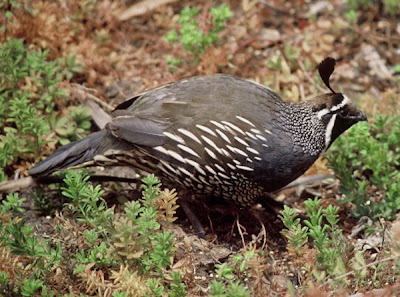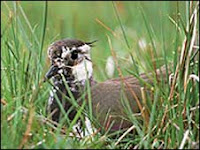Last week, PloS ONE published an interesting paper that argues that a diverse bird population lowers the human risk of contracting the West Nile Virus (WNV). The study compared WNV infection rates in sixty-five pairs of neighboring counties, in which one county had human WNV infections and the other did not, while both had infected birds. (One of the pairs included my home county, Middlesex, and its neighbor to the west, Somerset.)
The paper measured the inter-county contrast in human infection rates against the contrast in various measures of avian biodiversity. (Bird population data was derived from the Breeding Bird Survey.) It found that greater bird diversity correlated with fewer human infections. Avian biodiversity explained about 30% of the contrast.
The reason is something called the "dillution effect," which was first observed with Lyme disease transmission. The mechanism for the dillution effect is unclear; none of the proposed mechanisms matched up with the data in this paper's analysis. However, it seems to be related to the greater relative abundance of species that are poor hosts for the disease compared to species that are more susceptible. In the case of WNV, highly-susceptible species such as crows and robins tend to predominate in areas of lower bird diversity, so the disease will have plenty of hosts and a greater likelihood of spreading beyond birds.
Here are a few interesting points from the analysis:
- The analysis confirms that robins play a role in spreading WNV to humans. This has been reported in other studies, including one in Washington.
- Unsurprisingly, corvids (crows, jays) are associated with human infections.
- Surprisingly, finches also seem to be associated with human cases of WNV. I had not heard of finch susceptibility before reading this paper.
- Passerines as a group appear to be resilient in the face of WNV outbreaks, at least in the initial stages of an epidemic. This seems to contradict some previous reports, but perhaps not. The authors suggest that many passerine species may be poor hosts.
- Non-passerines seem much more susceptible to WNV than previously thought, so there may be many susceptible host species outside of Passeriformes.
From my own persepective, it may support conserving wildlife within cities as well as outside of them. Many environmentalists and urbanists argue that urban parks should not be wildlife habitat and should be for people instead. (I do not think those goals are always in conflict, but the argument exists.) This paper provides an example of how increasing local biodiversity can be beneficial to humans in concrete ways. In the case of WNV, the dillution effect works independently of relative urbanization. This suggests that perhaps a diverse wildlife population should have a place in urban planning.
Blog Note: I will not have internet access for the next few days, so I have prepared several posts to publish automatically. (If you do not know how to schedule posts, see here.) Though the blog will have the regular posting schedule, I will not be able to respond to comments or email until later in the week.





























